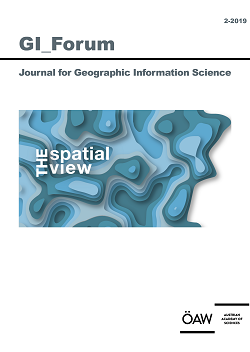Adrijana Car – Thomas Jekel – Josef Strobl – Gerald Griesebner (Eds.)
GI_Forum 2019, Volume 7, Issue 2
Journal for Geographic Information Science
Sven Schmuderer,
Roland Zink,
Werner Gamerith
S. 34 - 46
doi:
10.1553/giscience2019_02_s34
Verlag der Österreichischen Akademie der Wissenschaften
doi:
10.1553/giscience2019_02_s34
Abstract:
The effects of digitization on social coexistence have been a subject of controversy not only since the increased use of social media for political campaigns. Digital platforms are also being developed which, from the perspective of spatial planning and geography, enhance communication between administrations and citizens at the local municipal level. These applications are being developed in relation to three areas: (1) the everyday experiences and competences of citizens in dealing with geomedia, especially the use of smartphones; (2) the individual process design for a particular participatory case; (3) the desired societal or local political benefit. This paper deals with these three aspects and discusses five selected examples of how digital participation platforms can be designed to include the use of geomedia. Based on experiences with the proprietary development of the web application PUBinPLAN in particular and on its comparison with other platforms, insights can be derived with regard to success factors as well as to opportunities and risks.
geomedia, participation, digitization, success factors
Published Online:
2019/12/11 13:21:20
Object Identifier:
0xc1aa5576 0x003b1739
Rights:https://creativecommons.org/licenses/by-nd/4.0/
GI_Forum publishes high quality original research across the transdisciplinary field of Geographic Information Science (GIScience). The journal provides a platform for dialogue among GI-Scientists and educators, technologists and critical thinkers in an ongoing effort to advance the field and ultimately contribute to the creation of an informed GISociety. Submissions concentrate on innovation in education, science, methodology and technologies in the spatial domain and their role towards a more just, ethical and sustainable science and society. GI_Forum implements the policy of open access publication after a double-blind peer review process through a highly international team of seasoned scientists for quality assurance. Special emphasis is put on actively supporting young scientists through formative reviews of their submissions. Only English language contributions are published.
Starting 2016, GI_Forum publishes two issues a Year.
Joumal Information is available at: GI-Forum
GI_Forum is listed on the Directory of Open Access Journals (DOAJ)




 Home
Home Print
Print
 References
References
 Share
Share
